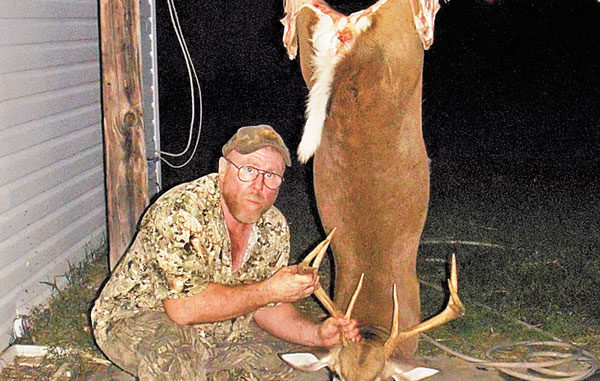
November is the time where it all comes together for outdoorsmen in the Santee Copper area. The fishing is outstanding for several species, and the rutting activity of whitetail deer reaches a peak early in the month. Plus, small-game hunting seasons kick into high gear. There’s so much to do, so little time.
This month we’re looking at some important information about our lakes. Scott Lamprecht, the regional fisheries coordinator for the S.C. Department of Natural Resources who oversees the Santee Cooper lakes, has some very positive information.
While speaking at a meeting of the Carolina Catfish Club (www.carolinacatfishclub.com), Lamprecht discussed not only catfish in Lake Marion and Lake Moultrie, but several other species as well.
Basically, the news is good — and perhaps getting better.
According to Lamprecht, the SCDNR has been doing winter gill-net studies on catfish for 28 years and has a long history of data on this resource. What SCDNR found last winter confirmed what it had suspected and the trend they had been seeing for a while.
“When the blue catfish first started reproducing in the lakes, they grew at exponentially fast growth rates,” Lamprecht said. “That’s because the numbers of fish were relatively low, and they had all they could possibly eat.
“The water conditions were good in terms of nutrients and water flow. By water flow, I mean the retention time of water in the lake was good in that there was ample flow to move more nutrients through the lakes. The longer it takes for water to move through a lake, the fewer nutrients are available to fish. It is a key to growth rates.”
“After a few years of excellent reproduction, the blue catfish population boomed, but the growth rate decreased,” Lamprecht said. “That’s actually quite predictable. However, about 1998, we began an extended drought that lasted about 10 years, with 2003 being the lone exception. The drought significantly reduced the water flow through the lake. The retention time for water to pass through the lake increased; thus far fewer nutrients were available.”
According to Lamprecht, the drought impacted many fisheries, not just the catfish. When the drought ended, he said, the lakes re-filled with water, and the water covered land that had been exposed and had become nutrient rich. It created an excellent situation for the lakes’ fisheries.
For blue catfish, it has been exceptionally good in terms of creating the trophy fishery many have desired. The numbers of fish were down, and then suddenly, nutrients are available again.
“In last winter’s gill-net surveys, we had one of the lower total numbers of fish caught in our sampling, but one of the highest total-poundage years ever,” he said. “The average size of the fish has increased considerably, and the growth rate of the fish has returned to near that phenomenal growth rate when the fish were first in the lake. For blue catfish, that can mean a 10-year-old blue catfish can reach about 50 pounds.”
Lamprecht also said there’s great news for bass, bream, striper and crappie fishermen.
“In 2008, 2009 and 2010, we’ve had very good spawns,” Lamprecht said. “Simply put, that means we should be seeing more of these fish in the lakes again. Part of the reason is the increased water flow, but the increase in native vegetation has also been a major contributing factor for the bass, bream and crappie. The bream and shellcracker have done extremely well.”
Lamprecht also said that the new regulations on striped bass seem to be having the desired impact.
“The fishery is not where we want it yet, but we believe the regulations are having the impact we hoped for,” he said. “I believe that in two to three years, striper fishermen will see a huge improvement in the striped bass fishery. As we begin to get good numbers of 26-inch-and-larger fish into the lakes, spawning success should increase significantly, and the fishing will once again be outstanding.”
Big bucks on the prowl
Not everyone has to wait for the rut to score on big bucks around the Santee Cooper lakes. Anytime a buck weighs in at over 200 pounds, it’s a big deer for the area.
Jay Daugherty of Elloree was hunting private land near the upper end of Lake Marion early in the season when he took a 210-pound, 18-inch inside spread buck.
“I shot the buck about 7:35 pm as he was slipping along,” Daugherty said. “I knew it was a large deer when I shot it, but until I walked up to it, I didn’t realize just how big it was.”
Daugherty has taken a lot of big bucks in the area over the years, but with body size and rack combined, this one ranks near the top of his list.




Be the first to comment